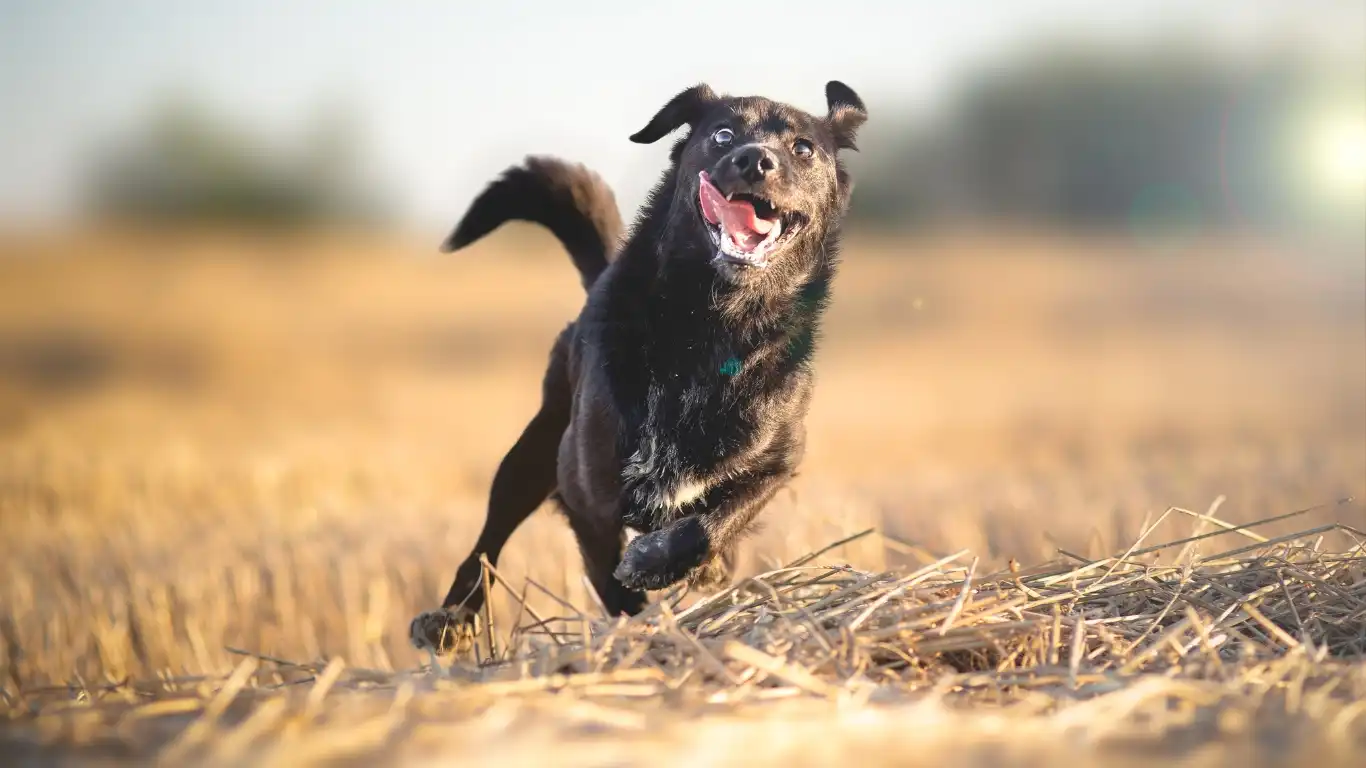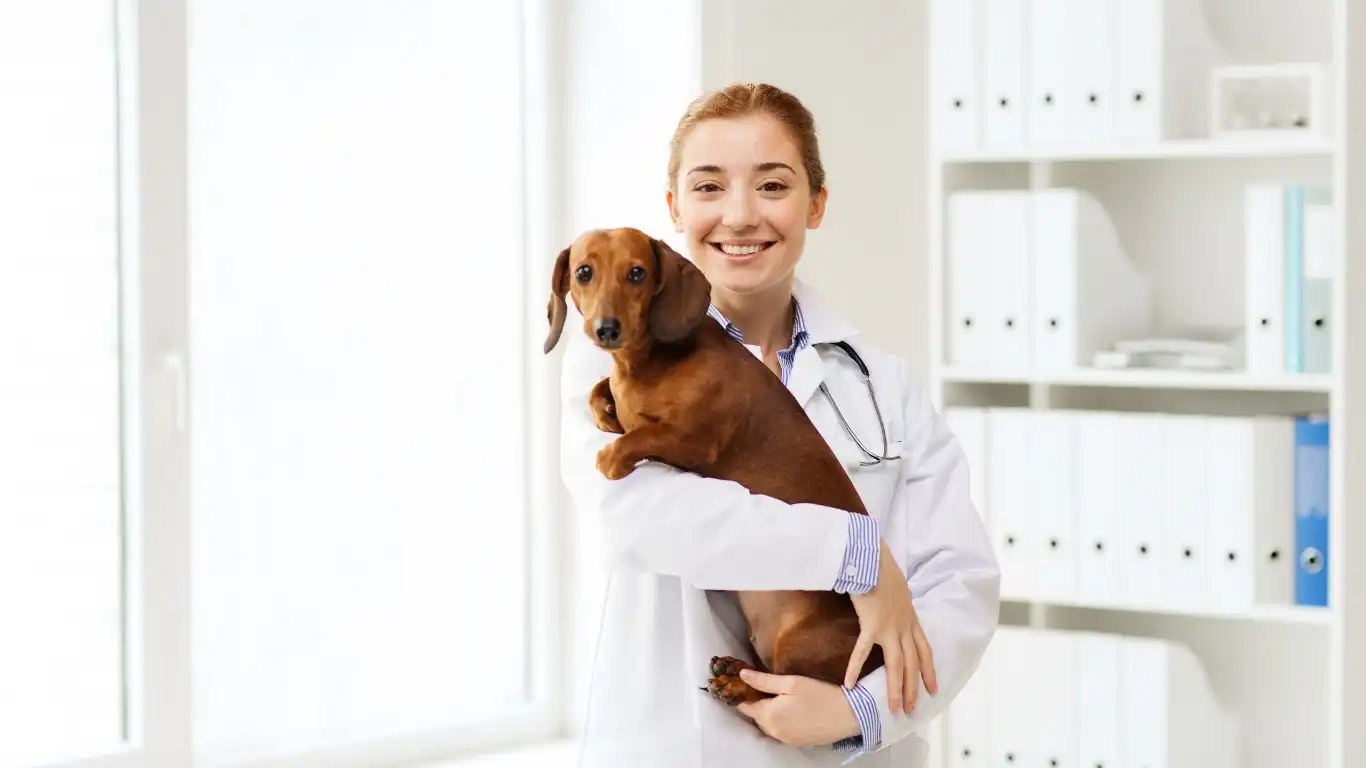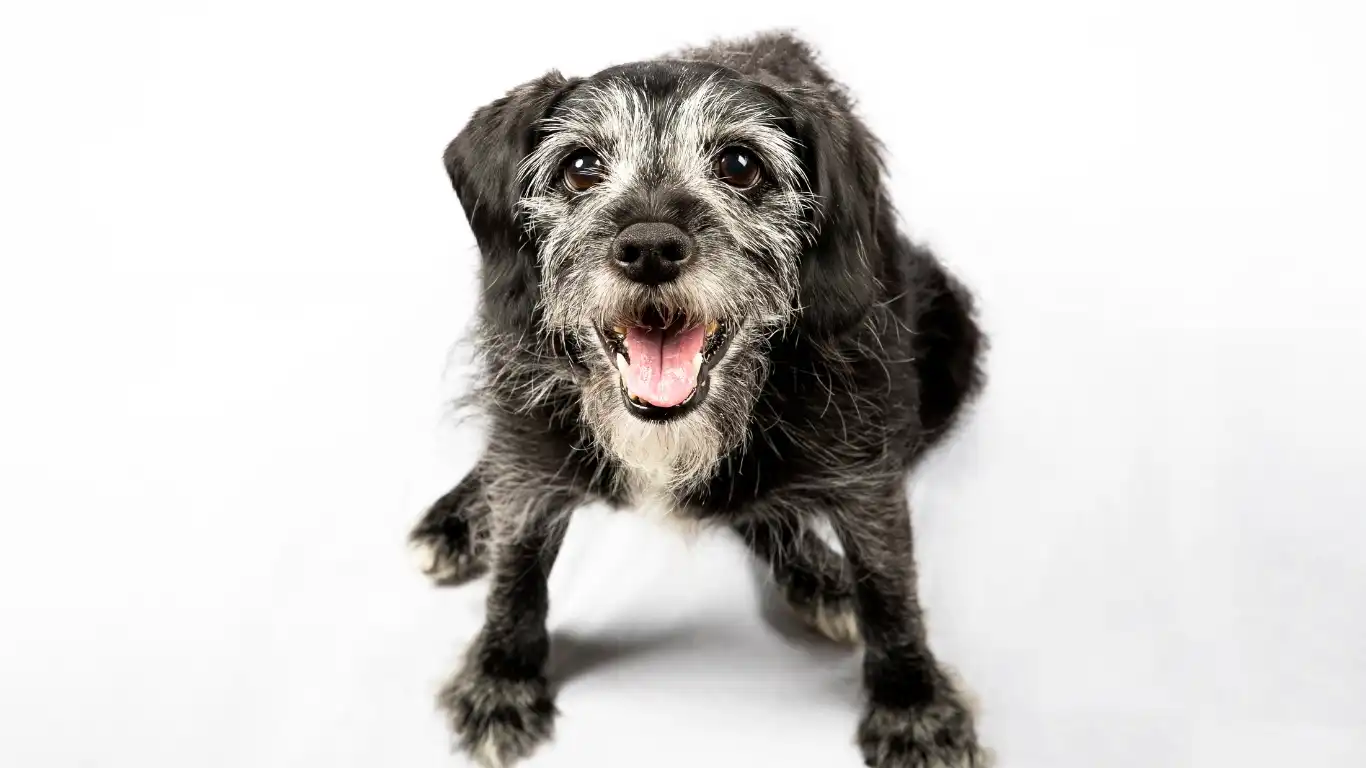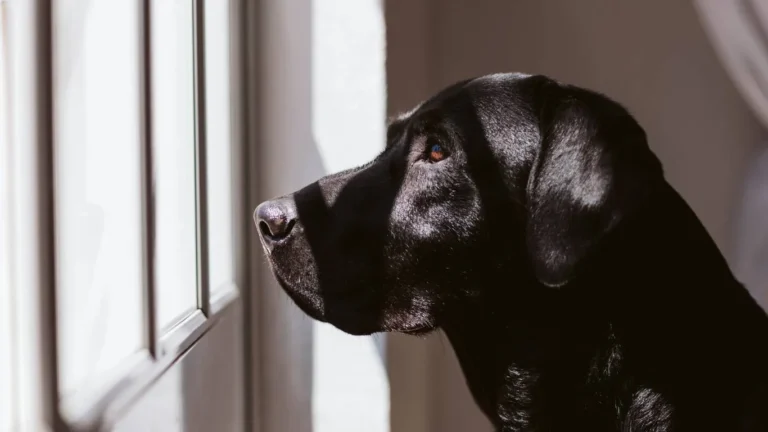Discover the Best Calming Products for Dogs with Anxiety to Help Your Pet Relax and Feel Calm
As a Veterinary Technician with a focus on nutrition, I’ve had the privilege of helping countless pet parents manage their dogs’ anxiety, especially when it comes to finding the best calming products for dogs with anxiety. Anxiety in dogs is a real challenge that many pet owners face, whether it’s triggered by separation, loud noises, travel, or even changes in routine. It can be heart-wrenching to watch our furry friends struggle, and finding effective solutions becomes a priority. In this guide, we’ll dive into the world of calming products, offering insights based on my personal experience and what has worked for the dogs I’ve cared for. From supplements to calming collars, there’s a wide range of options available, but not all of them are created equal. So, let’s get started on finding the best calming solutions for your anxious pup!
Understanding Dog Anxiety: What You Need to Know
Before we dive into the best calming products, it’s important to understand what anxiety in dogs actually looks like. Anxiety can manifest in different ways, and it’s not always obvious. Some dogs might show signs of stress when left alone, while others might become fearful during thunderstorms, fireworks, or even just a change in routine. Recognizing the signs of anxiety is crucial in choosing the right product for your pet.
Common Symptoms of Anxiety in Dogs
- Excessive barking or whining: This can be a sign of distress when left alone or during stressful situations like loud noises.
- Destructive behavior: Chewing on furniture, shoes, or even their own paws can be a sign that your dog is trying to cope with anxiety.
- Pacing or restlessness: Dogs with anxiety often can’t settle down and may pace around the house, especially when they sense something is off.
- Loss of appetite: Anxiety can cause dogs to lose interest in food, which can be concerning for both their physical and mental health.
- Excessive drooling or panting: Some dogs may experience an increase in drooling or panting when they feel anxious.
It’s essential to recognize these signs early on. The sooner you can identify anxiety, the better you’ll be able to address it with calming products that will help your dog feel safe and secure.

The Best Calming Products for Dogs with Anxiety
Now that we understand anxiety a bit better, let’s talk about the solutions available. There are several types of calming products, and finding the best one for your dog depends on their specific needs, personality, and the nature of their anxiety. From calming supplements to tools like collars and pheromone diffusers, there’s something out there for every dog.
1. Calming Chews and Supplements
One of the most popular solutions for dog anxiety is calming chews and supplements. These products typically contain natural ingredients such as valerian root, chamomile, L-theanine, and CBD, which have been known to help reduce stress in both humans and dogs. These chews are easy to administer and can work quite quickly, especially for situations like storms or travel anxiety.
As a veterinary professional, I’ve recommended these calming chews many times. I’ve seen first-hand how some dogs are able to relax and feel more at ease after taking a dose. However, it’s essential to always check with your vet before introducing any new supplement into your dog’s diet, especially if your dog is on medication or has a specific health condition.
2. Calming Dog Collars
If your dog suffers from anxiety on a more continuous basis, calming collars might be a great option. These collars typically release a synthetic version of the calming pheromones that a mother dog would naturally produce to soothe her puppies. The idea is that these pheromones mimic a sense of safety and security, which can help reduce anxiety in your dog.
I’ve seen these collars work wonders for some dogs. They’re discreet, non-invasive, and they last for several weeks. Many pet owners I’ve spoken to have mentioned how much calmer their dogs have been since using these collars, especially during stressful events like vet visits or long car rides.

3. Dog Anxiety Vests
Another option I’ve seen work time and time again is the anxiety vest. These vests apply gentle, constant pressure around your dog’s torso, which has a calming effect similar to swaddling a baby. It’s thought that this pressure triggers the release of calming hormones, helping your dog feel more secure.
Many pet owners have shared how their dogs calm down significantly when wearing these vests during fireworks, thunderstorms, or when they’re left alone. In my experience, it’s one of the easiest and most effective ways to alleviate anxiety, especially in dogs who don’t respond well to medications or supplements.
4. Pheromone Diffusers
If you prefer something more subtle, pheromone diffusers are another great option. These diffusers release synthetic pheromones that mimic the calming signals a mother dog sends to her puppies. They’re designed to be plugged into a wall and release a steady stream of calming pheromones throughout the home. This is particularly helpful for dogs who suffer from separation anxiety or general nervousness in their environment.
I’ve found that these diffusers can be a lifesaver, especially for dogs who have anxiety related to being left alone. The calming pheromones help them feel secure in their own space, which can reduce stress and behavioral issues. While it may take a little time for the diffuser to work its magic, many pet owners swear by it once they see the results.

Why It’s Important to Choose the Right Product
When selecting the best calming product for your dog, it’s important to remember that no two dogs are the same. What works for one dog may not work for another, and sometimes it can take a bit of trial and error to find the right solution. That’s why I always recommend consulting with your veterinarian before trying any new calming product, especially if your dog has underlying health issues.
Furthermore, a holistic approach works best. In addition to using calming products, consider addressing the root causes of anxiety. Some dogs benefit from extra exercise, mental stimulation, or behavioral training. Working closely with a professional trainer or behaviorist can be incredibly beneficial in these cases.
By combining calming products with proper training and environmental enrichment, you can help your dog lead a more relaxed, stress-free life.
Additional Calming Products That Can Help Your Dog’s Anxiety
We’ve already covered some of the most popular calming products, but there are still a few more tools you can incorporate into your dog’s routine to help ease their anxiety. As a veterinary technician, I’ve worked with various pet owners who have found success using a mix of different solutions. Sometimes, a combination of calming products is the key to achieving the best results for your dog.
5. Calming Music and Sound Therapy
You might not think of music as a calming tool for your dog, but believe me, it can work wonders. Many pet owners are surprised by how much calming music or sound therapy can help their anxious dogs. These specially designed playlists or soundtracks are tailored to soothe your dog and reduce stress.
As someone who’s worked with stressed pets, I’ve seen how relaxing music can have a soothing effect on dogs with anxiety. Some soundtracks use binaural beats or frequencies that are designed specifically to calm dogs. Others feature sounds like gentle rain or soft classical music, which are calming for both humans and pets. Some of my clients have even reported that their dogs sleep more soundly when these calming sounds are playing in the background.

6. Herbal and Aromatherapy Solutions
Herbal remedies and aromatherapy are another great option for dogs with anxiety. You’d be surprised by how effective certain scents and herbs can be in calming an anxious dog. Many natural herbs like lavender, chamomile, and valerian root are known for their calming effects, and they can be used in a variety of forms—from sprays to essential oils or herbal supplements.
When it comes to using essential oils, it’s important to be cautious. Some oils can be toxic to dogs, so always consult with your veterinarian before introducing any new scent-based solutions. Personally, I’ve had a lot of success recommending lavender-scented sprays or diffusers for dogs who have mild anxiety. Just a few drops of lavender oil on a collar or in a diffuser can have a calming effect on some dogs, making them feel more at ease in stressful environments.
7. CBD for Dogs
One of the newer and more talked-about solutions is CBD (cannabidiol), a natural compound derived from hemp. While it doesn’t contain THC (the psychoactive compound in cannabis), CBD has been found to have calming and anti-anxiety properties. In recent years, CBD has become increasingly popular as a treatment for a variety of health conditions in dogs, including anxiety.
I’ve seen CBD work wonders for dogs who struggle with anxiety, especially those who are nervous during thunderstorms, fireworks, or when they’re left alone. Many pet owners I know have used CBD oil or treats to calm their dogs during particularly stressful times, and the results have been promising. However, it’s important to remember that not all CBD products are created equal. Make sure to choose a high-quality, veterinarian-approved product to ensure safety and effectiveness.

How to Know What’s Right for Your Dog
With so many calming products available, it can be overwhelming to choose the best one for your dog. Every dog is unique, and what works for one dog might not work for another. That’s why I always recommend trying different products, but doing so with patience and observation.
Trial and Error
Finding the right solution for your dog’s anxiety may take a bit of trial and error. In my experience, it’s not always the first product that does the trick. Sometimes, a combination of calming techniques—like a calming collar paired with calming music or CBD treats—can work wonders.
What I’ve found is that consistency is key. Try to stick with one product or solution for a few weeks to see how your dog responds. This will give you a clearer picture of whether it’s working, or if you need to try something else. When starting a new calming product, keep a journal of your dog’s behavior. Note how they respond during stressful situations like vet visits, travel, or thunderstorms. This can help you track any changes or improvements over time.
Consulting Your Veterinarian
If you’re unsure where to start, consulting with your veterinarian is always a good idea. As a veterinary technician, I’ve seen firsthand how valuable it is to have an experienced professional guide you in the right direction. Your vet can help you choose the best calming products for your dog’s specific needs and make sure that any products you use are safe, especially if your dog has any pre-existing medical conditions or is on medication.
In some cases, your veterinarian might recommend a more specialized treatment, like prescription medications, in addition to over-the-counter calming products. It’s always important to take a holistic approach to managing anxiety, which can include behavioral therapy, a balanced diet, and regular exercise, alongside any calming products you choose to use.

Environmental Changes and Routine
Along with calming products, making some simple changes to your dog’s environment and routine can help ease anxiety. Dogs are creatures of habit, and even small changes can sometimes trigger stress. Keeping a stable and predictable routine can go a long way in reducing anxiety, especially for dogs who are sensitive to changes in their environment.
Creating a Safe Space
If your dog experiences anxiety when left alone, creating a designated safe space in your home can be very helpful. This can be a quiet, cozy area where your dog feels secure, whether it’s a crate or a comfortable bed in a corner of the room. Make sure this space is free from distractions and anything that could trigger anxiety.
Adding comforting items, like their favorite toys, a soft blanket, or even an item of your clothing, can help your dog feel more at ease in this space. I’ve seen many dogs benefit from having a designated ‘safe zone’ where they can retreat to when they’re feeling anxious or stressed.
Long-Term Strategies for Managing Dog Anxiety
While calming products can be incredibly effective in managing your dog’s anxiety, they are just one piece of the puzzle. In my experience as a veterinary technician, it’s important to think of anxiety management as a long-term strategy. While calming products can provide immediate relief, addressing the root causes of anxiety and working on behavior modification can lead to lasting results. Let’s explore some long-term strategies to complement the calming products we’ve discussed so far.
1. Behavior Training and Desensitization
One of the most effective long-term strategies for managing dog anxiety is behavior training. Many dogs with anxiety can benefit from desensitization and counter-conditioning techniques. This is where you gradually expose your dog to the anxiety-inducing stimulus (whether it’s being left alone, loud noises, or new environments) in a controlled and safe manner.
As a veterinary professional, I’ve worked with dogs whose anxiety levels significantly decreased once their owners implemented desensitization techniques. For example, if your dog suffers from separation anxiety, you might start by leaving them alone for short periods and gradually increase the time as they become more comfortable. Positive reinforcement, like treats or praise when your dog stays calm, can also be incredibly helpful.
It’s important to remember that this is a gradual process, and it requires patience. You might not see immediate results, but over time, many dogs will begin to build resilience to their anxiety triggers. It’s always a good idea to work with a professional trainer who specializes in anxiety or behavioral issues to ensure you’re using the right techniques.
2. Exercise and Mental Stimulation
Physical and mental stimulation are often overlooked when it comes to managing dog anxiety. Dogs with anxiety can benefit greatly from regular exercise, as it helps release pent-up energy and promotes a sense of calm. Exercise, such as daily walks or playtime, can reduce stress hormones and improve your dog’s overall mood.
In addition to physical activity, mental stimulation is just as important. Interactive toys, puzzle feeders, and training sessions can keep your dog’s mind busy and help redirect their focus away from anxiety-inducing triggers. A tired dog—both physically and mentally—is generally a calmer dog, and these activities can go a long way in improving their overall well-being.

3. Establishing a Routine
Dogs thrive on routine, and a consistent daily schedule can help reduce anxiety. If your dog is anxious about being left alone or is afraid of certain events, creating a predictable routine can help them feel more secure. Feed them at the same time each day, take walks at the same time, and try to keep other activities as consistent as possible.
When dogs know what to expect, they’re less likely to feel anxious because they understand their environment better. For example, if your dog gets anxious before you leave for work, a routine that includes a specific pre-departure ritual, like a treat or a favorite toy, can help them feel more at ease when you go.
Of course, life happens, and sometimes routines need to be adjusted. However, as much as possible, maintaining consistency will help create a sense of stability and comfort for your dog.
4. Nutrition and Diet Considerations
Believe it or not, your dog’s diet can play a role in their anxiety levels. A balanced, nutritious diet is essential for overall health and well-being, but certain nutrients are especially important for managing stress and anxiety. For example, foods that are rich in Omega-3 fatty acids (like fish oils) can help regulate mood and reduce anxiety in some dogs.
Additionally, certain supplements, like L-theanine (an amino acid found in green tea) and tryptophan (an essential amino acid), can help promote relaxation and reduce anxiety. I’ve seen positive results in dogs who were switched to anxiety-supporting diets or supplements, particularly those with chronic anxiety issues.
If you suspect that your dog’s anxiety could be tied to their diet or if you’re looking to make changes, it’s a good idea to consult with your veterinarian or a pet nutritionist. They can recommend the best options to support your dog’s health while also managing their anxiety.

References
For more information on managing dog anxiety and finding the best calming products, check out these trusted resources:
Disclaimer
The information provided in this article is based on my personal experience as a veterinary technician and my observations working with pet owners. It is not intended to replace professional veterinary advice. Always consult with a veterinarian before making any changes to your dog’s health or introducing new products, especially if your dog has an existing medical condition or is on medication. Every dog is unique, and what works for one dog may not be suitable for another. Please ensure that you make informed decisions for the well-being of your pet.





